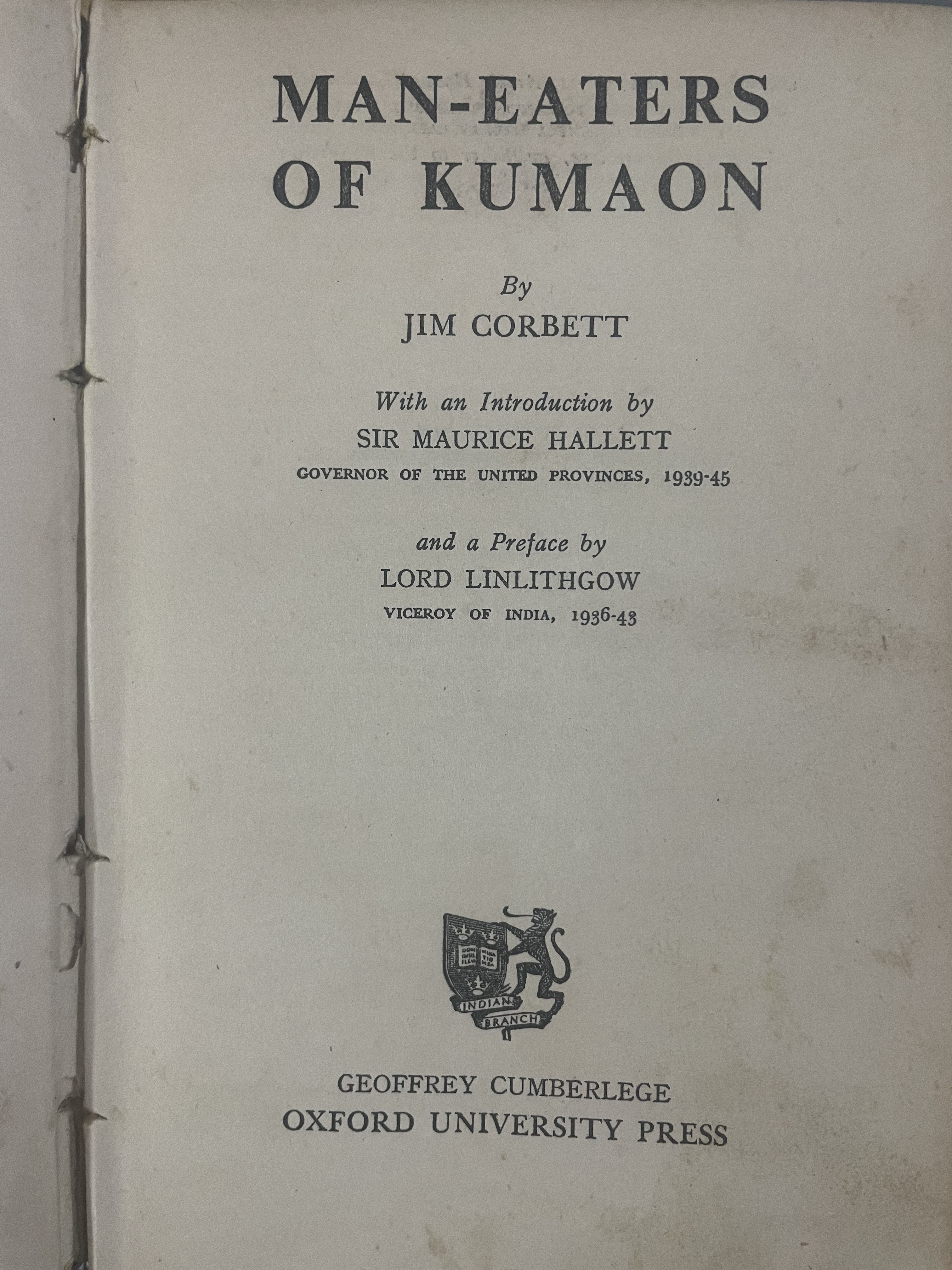Man Eaters of Kumaon

About
Summary
Exquisite
TOC
Details
Related
URL
Images
Overview
Man-Eaters of Kumaon is a book written by Jim Corbett chronicling his experiences hunting man-eating tigers in the Kumaon region of India. Edward James Jim Corbett (1875-1955) was a British Indian Army soldier, hunter, and conservationist, most famous for ridding the Kumaon area of man-eating tigers.Published in 1944, Man-Eaters of Kumaon details Corbett's hunts for tigers that had turned to preying on humans. Corbett notes that tigers do not naturally eat human flesh but only start doing so because of wounds or an inability to catch their natural prey. The book comprises an author's note, nine chapters, and a glossary of Kumaon jargon. Each chapter recounts the pursuit and killing of a specific man-eating tiger, describing the challenges, risks, and the local communities' fear. Corbett's narratives highlight the disruption caused by these tigers and his efforts to protect the villagers.
Importance of Book
Wildlife Literature: It is a classic work of wildlife literature, offering detailed descriptions of the Indian jungle, its flora and fauna, and the behavior of tigers.
Historical Record: The book provides a historical record of the Kumaon region in the early 20th century, capturing the challenges faced by rural communities living in close proximity to wildlife.
Conservation Message: It raises awareness about the importance of wildlife conservation and the need to protect endangered species. Corbetts insights into the causes of tigers turning into man-eaters emphasize the role of habitat loss and human interference in disrupting the natural balance.
Adventure Narrative: The book is an adventure story, filled with suspense, danger, and excitement, making it a compelling read for a broad audience.
Cultural Insight: It offers insights into the cultural dynamics between the British colonial administration and the local Indian population, highlighting the complexities of their interactions.
Key Themes
Man vs. Nature: The book explores the conflict between humans and nature, particularly when animals, like tigers, become a threat to human life. Corbetts hunts represent an attempt to restore balance and protect human communities from the dangers posed by man-eaters.
Colonialism and Responsibility: The narratives are set against the backdrop of British colonial rule in India. Corbett, a colonial hunter, feels responsible for protecting the local population from man-eaters. His actions reflect the colonial powers attempt to control nature and ensure the safety of its subjects.
Conservation: Although Corbett is primarily a hunter in the book, his deep understanding of the jungle and its inhabitants shows his respect for nature. He notes that tigers only become man-eaters under specific circumstances, emphasizing the importance of preserving their natural habitat and prey.
Courage and Determination: Corbetts hunts are portrayed as courageous and challenging endeavors, requiring immense patience, skill, and determination. He often faces danger alone, spending hours in the jungle, tracking and waiting for the man-eaters.
Cultural Encounter: Corbetts interactions with the local Kumaoni people reveal a cultural encounter between the British hunter and the Indian villagers. He develops friendships and gains their trust, highlighting the exchange of knowledge and mutual respect between different cultures.
Cultural Significance
Popularizing Wildlife Conservation: The book played a role in popularizing wildlife conservation in India and beyond. Corbetts stories of hunting man-eaters while respecting and understanding the natural world helped to promote a more nuanced view of wildlife management.
Shaping Perceptions of Tigers: Man-Eaters of Kumaon influenced how tigers are perceived in popular culture. Corbetts portrayal of tigers as creatures that only turn to eating humans out of desperation helped to dispel myths and promote a more informed understanding of their behavior.
Inspiring Conservation Efforts: The book has inspired conservation efforts aimed at protecting tiger habitats and reducing human-wildlife conflict. Corbetts legacy as a hunter and conservationist continues to motivate individuals and organizations working to preserve India natural heritage.
Promoting Eco-Tourism: The book has contributed to the growth of eco-tourism in the Kumaon region, as visitors come to experience the landscapes and wildlife that Corbett described in his stories.
Effects on Society
Raising Awareness: Man-Eaters of Kumaon raised awareness about the challenges faced by rural communities living in tiger habitats, prompting discussions about human-wildlife conflict and the need for effective conservation strategies.
Influencing Policy: Corbett's insights into the causes of tigers turning into man-eaters influenced wildlife management policies in India, leading to a greater emphasis on habitat protection and conflict mitigation.
Inspiring Conservationists: The book inspired generations of conservationists and wildlife enthusiasts, motivating them to work towards protecting India natural heritage.
Promoting Understanding: It promoted a better understanding of the complex relationship between humans and wildlife, encouraging a more nuanced and compassionate approach to conservation.
Conclusion
Man-Eaters of Kumaon remains a significant work, blending adventure, wildlife conservation, and cultural insights. It continues to captivate readers and inspire efforts to protect tigers and their habitats while promoting a deeper understanding of the relationship between humans and nature.
Title
Man Eaters of Kumaon
Author
Jim Corbett
Name of Publisher
Oxford University Press
Publish Date
1947
Subject
A mix of adventure
Vintage
1901-1947
Number of Pages
218
Category
Wild life
Sub Category
Social Sciences
Rarity
RARE
